How Women Are Leading the Charge to Recycle Whole Houses
From lobbying for changes to city laws to running reuse centers for building supplies, women are dominating the deconstruction industry
/https://tf-cmsv2-smithsonianmag-media.s3.amazonaws.com/filer/4f/e3/4fe3d2b1-42aa-482e-9726-0d569ed52fe8/ruthie_mundell-community_forklift.jpg)
When Ruthie Mundell was in high school, everyone laughed at her for digging through the trash. She’d count paper, cans and cardboard, keeping careful numbers on trash volume and recycling rates. Her "trash audit" led to a local recycling revolution in Leonardtown, Maryland, amounting to more bins and higher student recycling rates.
Now, 25 years later, her recycling mission is bigger in scope and scale.
"We're so proud of ourselves for recycling soda cans and office paper. But we're not thinking about the larger scale stuff," she says.
Mundell, marketing and outreach director at Community Forklift, is one of many women around the country leading the reuse and recycling charge. Instead of focusing on trendy plastic straw bans, they are recycling whole houses.
Building a trade by taking things apart
Mundell dons her hard hat and strolls through the warehouse of the 40,000-square-foot compound at Community Forklift, a reuse center for home improvement supplies in Bladensburg, Maryland. Dozens of volunteers and employees bustle around her. They unload a granite countertop, help customers measure new cabinetry, and inventory lumber.
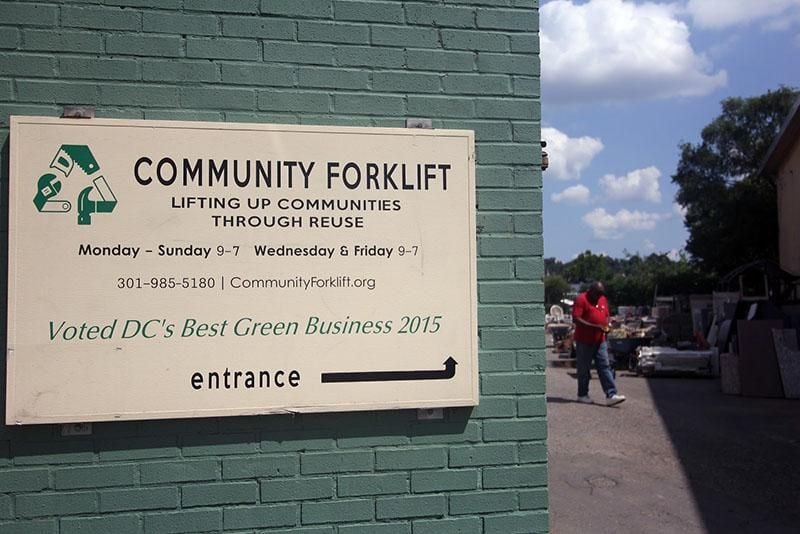
At first glance, it looks like Home Depot, minus the matching orange aprons. Take a closer look, and you'll notice the imperfections—mismatched lengths of lumber, half-used cans of paint, a countertop with a chipped corner. For Mundell, these are signs of opportunity. Everything at Community Forklift comes from buildings deconstructed to preserve reusable items, which Mundell says is up to 90 percent of a structure.
"Even the guts of the house can be reused, not just the pretty stuff like the claw foot tubs and chandeliers,” Mundell says. “Someone who wants to save money can come in here and buy a bag of insulation for two bucks, and they're thrilled."
Construction and demolition waste, or C&D waste, accumulate after the construction, renovation and demolition of buildings and houses. The EPA estimates that in 2015, the United States generated 548 million tons of C&D waste. That's more than twice the amount of municipal solid waste or everyday items tossed into our trash bins. Reuse centers, like Community Forklift, work with deconstruction crews to take apart buildings, reselling the materials at a fraction of the cost.
According to Mundell, women dominate the industry. She can list a few dozen off the top of her head: Karen Jayne, the executive director of Arizona-based Stardust Nonprofit Building Supplies; Danielle Nkojo, a member of Washington D.C.'s Department of Energy and Environment Urban Sustainability Administration; Anne Nicklin, Director of Workforce Training and Deconstruction Services at Evanston Rebuilding Warehouse where Aina Gutierrez is executive director; Nicole Tai, CEO of Green Lynx, providing deconstruction services and upcycled furniture in California; and Sally Kamprath and Kathy Burdick who own ReHouse Architectural Salvage, a reuse business in New York. All women, all leaders. And yet, the trend is hardly noticed.
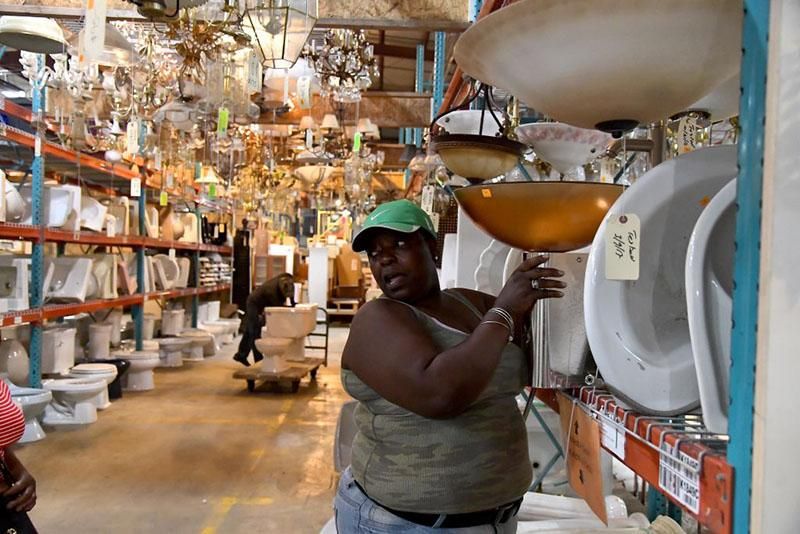
Joe Connell, executive director for Building Material Reuse Association (soon to be rebranded as Build Reuse), estimates that at least 50 percent of the deconstruction and reuse industry is women. With women making up only three to six percent of the building trades as a whole, Mundell and the other women who are taking over top roles in deconstruction bring a new perspective.
"A lot of the movers and shakers within our industry are women," Connell says. "They're real mavericks. It's been to the benefit of the whole industry."
The birth of an industry
Baltimore’s The Loading Dock, led by executive director Leslie Kirkland, became the first reuse center in the U.S. when it opened in 1984. Now, the grassroots trend is growing into a thriving trade. According to Mundell, Community Forklift did 42 deconstruction jobs in 2018 and 25 so far this year.
While reusing housing materials is an age-old practice, Mundell says it had been lost to advances in the rise of low-cost, durable materials. Now vinyl flooring, made to look like wood, is a cheap alternative to the real hardwood floors of the past.
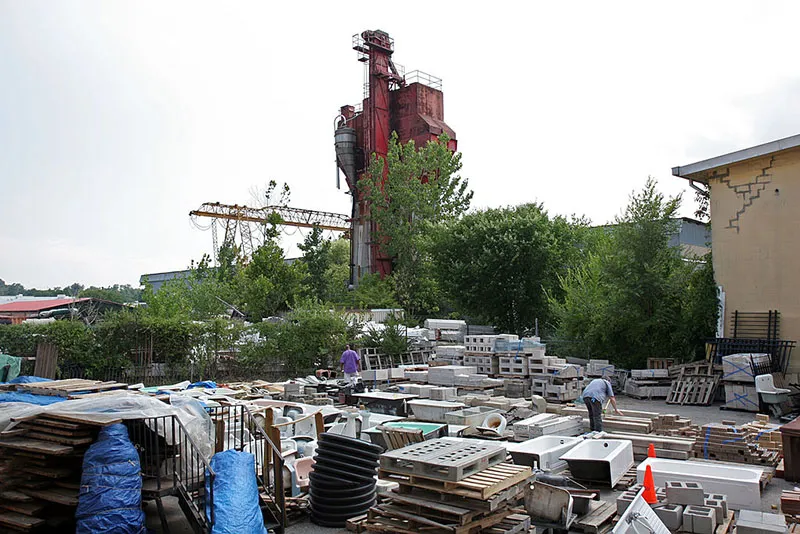
According to Connell, the shift happened when the U.S. was opting into World War II.
"We had to build our war machine very quickly," he says, adding that Caterpillar and other U.S. companies quickly created the capacity for rapid land clearing to build housing, landing strips and naval bases. According to Connell, that push for mass production systematized the construction industry, leaving no room for deconstruction. Then, the post-war suburbia boom and planned obsolescence further encouraged the mass production of cheap products that needed to be bought again and again.
Connell channels his passion toward advocating for the deconstruction and reuse industry. He says there is something for everyone in building reuse: Environmentalists appreciate the waste reduction; increasing the value of low-income housing can address poverty; and instead of paying landfill fees, money flows to deconstruction crews that employ three times as many people as a demolition crew.
Social crusaders branch out
With women making up only 9 percent of the construction industry, what is compelling them to enter deconstruction? Connell has a theory.
"They went into it socially minded," he says. Many of the early reuse organizations grew out of social service work, which employs 82 percent women. The Loading Dock, the first reuse center, opened as a non-profit with the mission of tackling poor housing conditions with affordable materials. A lot of programs have an educational component, attracting female leaders like Pam Howland, who runs the Old Window Workshop in Springfield, Massachusetts. She trains low-income women in the artisan craft of refurbishing windows.
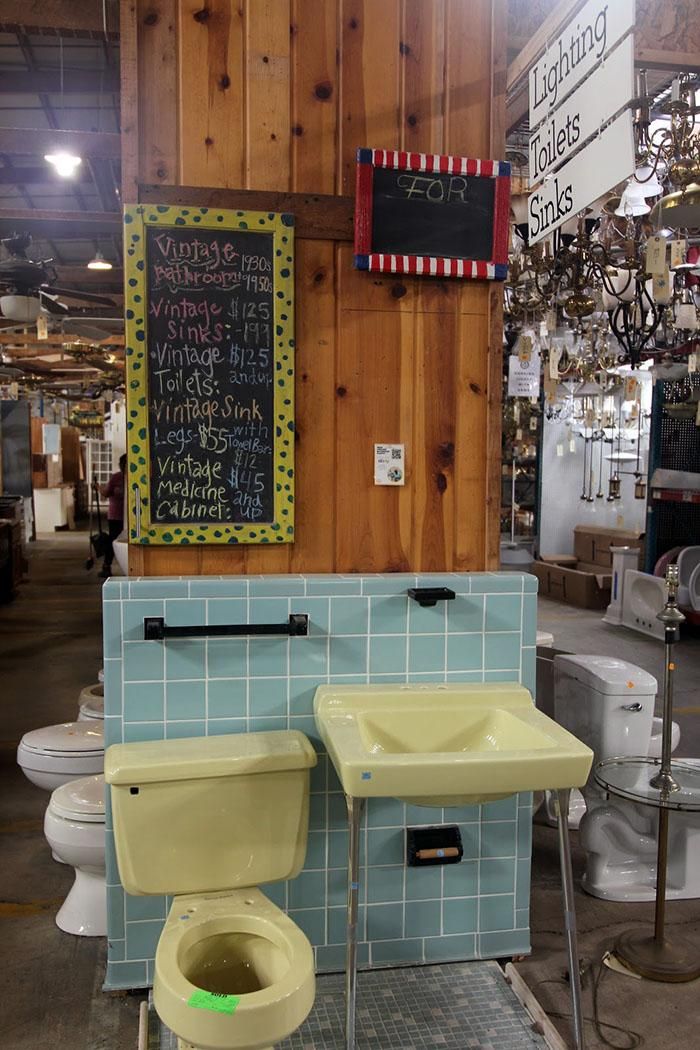
"I think that [women] were empowered to create more change within their communities," Connell says. "That's one of the prime benefits of deconstruction and reuse is that they are pooling the resources available to help make change."
Pamela Stone, a professor of sociology at Hunter College in New York City who studies gender inequality and segregation in the workplace, agrees. She says women tend to be more involved as volunteers in their communities, schools and neighborhoods. "Women are on the ground," she says. "They have a vantage point to see the good of doing this for their community in a way that perhaps men don't."
MaryEllen Etienne saw a need for environmental change, so she launched the Reuse International, which connects people in the industry through an international conference, training and certification programs. "Reduce, Reuse, Recycle" is Etienne's mantra. She says a big challenge is that people think “recycling” and “reuse” are synonymous—citing the Zero Waste Development Act, which previously only had provisions for recycling. Etienne worked with former U.S. Congressman Keith Ellison to include the definitions of "reuse" and "zero waste," and ensure "reuse" was as prolific as "recycling."
"We need to work the waste hierarchy in the correct order, and that's 'reduce' first," she says. "Recycling is important. But it's the last step."
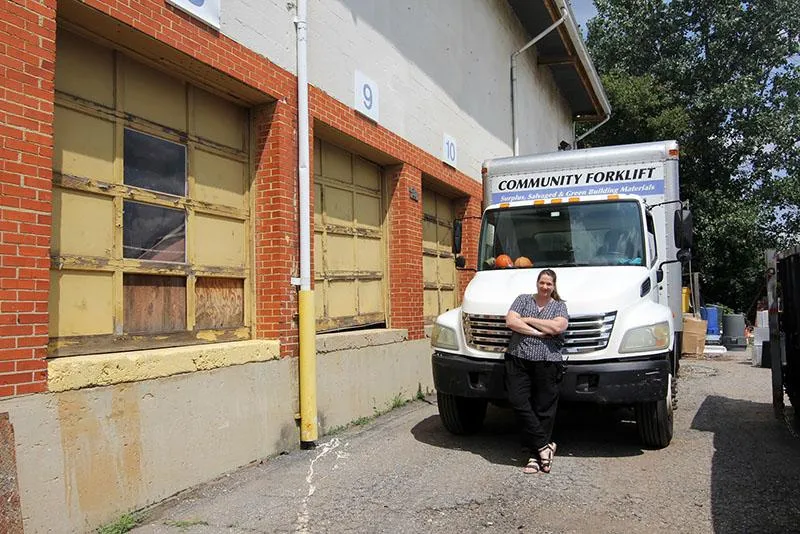
When you look at energy use and savings, the link to climate change is evident. Creating a new product requires energy to mine and process raw materials. Even recycling involves the input of energy. But reusing something already manufactured doesn't take more power. So, cutting a new countertop from that chipped slab of granite can save on costs and help the environment. Earlier this year, Etienne helped revise the Zero Waste Development Act to include a waste reduction and reuse component. Having regulations, she says, is when real change starts to happen.
Could a low-profit margin drive growth?
Mundell claims that the growth of women in deconstruction and reuse could be because it isn't a booming industry yet. "This is a new industry and people don't see that it could be lucrative. Because this is seen as trash, it's not seen as having real money in it. That might be part of the reason why women are running a lot of organizations," she says. This sentiment aligns with Stone's thought that the gender trend relates to "a fairly time-intensive, low-profit margin."
"You have a grassroots momentum for something like deconstruction, and you have a massive industry against it," says Sara Badiali. The building material reuse consultant thinks regulations are an effective way to make a change. Yet, she has searched the world and "can't find any place that actually has the words 'building deconstruction' in legislation."
Badiali worked with the city of Portland, Oregon, to create the nation's first reuse ordinance. Now, Portland homes built before 1916 must be evaluated for deconstruction. Other cities like San Francisco and Milwaukee are drafting their own ordinances. Badiali worries about developers and construction crews that are resistant to the change. In contrast to demolition, in which one person can wipe out a building before lunch, deconstruction takes time and manpower. A house that takes a day to demo, might take a week to deconstruct. And despite a tax break to offset the cost, immediate financial incentives aren't evident.
Yet both Badilai and Mundell say to look at the fine print and savings abounds. Most C&D waste is taken to private landfills, a cost not bargained for. Donating materials from deconstruction can provide a worthwhile tax deduction. And, there are added social benefits.
"Instead of paying the landfill fees, you're paying a crew to work. So that's pretty darn cool," Mundell says.
Deconstruction and reuse can be lucrative. "We make enough revenue to employ 45 people. We're 97 percent self-funded. It's only been in the last two years that we've gotten any grants," Mundell says.
Will history repeat itself?
Historically, women make inroads into new and seemingly unimportant areas of the economy when they see them as an opportunity, Stone explains. For instance, when computer science first emerged, it was very egalitarian. Lots of women were programmers and technicians. But, over time, it completely flipped, says Stone.
"It was no longer a flash-in-the-pan," Stone says. "It is the anchor of a major sector of the economy and a very lucrative field. That is why men started pouring in. And women now have a scant representation."
Stone sees this pattern throughout history. During the Industrial Revolution, the first factory workers were women while men worked on farms. But, as agriculture declined, men sought work in factories, pushing women out. "My cynical guess would be that if [deconstruction and reuse] becomes a significant part of the construction industry then male-dominated, bigger firms will take interest and take over," she says.
During her first year at Community Forklift, Mundell was the only female employee. But, for now, she is surrounded by a diverse group of men and women. Clipboard in hand, she takes note of the ceramic tiles volunteers offload from a truck at the warehouse. They remind her of the first item she ever reclaimed, a single brick from her childhood home. More than 200 years old, the brick had been salvaged from another home before that. Now, thanks to her rebellious pre-teen self, stealing her mother's car to fetch the brick after the house was sold, it is one of her favorite items. Its next use will be a fire pit in Mundell's backyard.